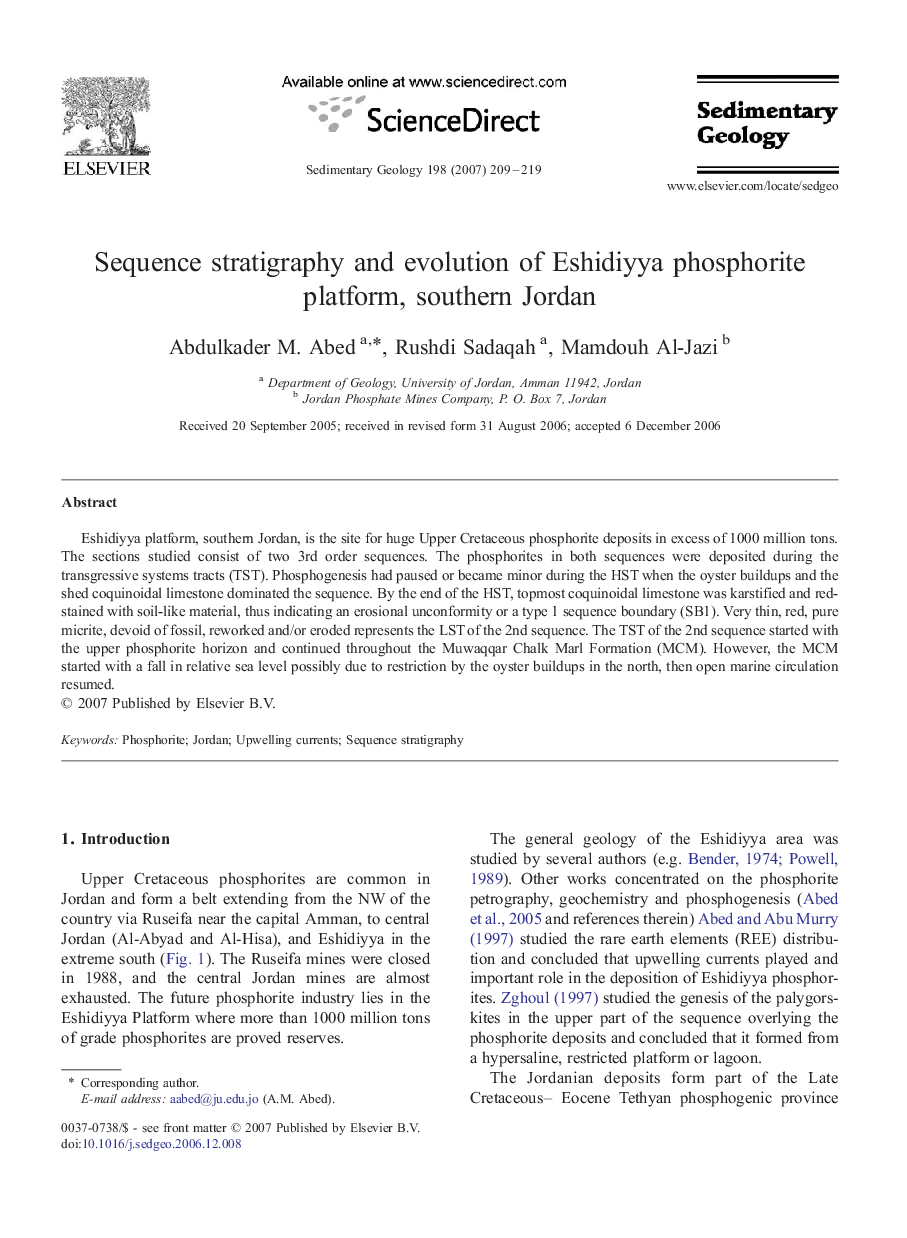| Article ID | Journal | Published Year | Pages | File Type |
|---|---|---|---|---|
| 4690871 | Sedimentary Geology | 2007 | 11 Pages |
Eshidiyya platform, southern Jordan, is the site for huge Upper Cretaceous phosphorite deposits in excess of 1000 million tons. The sections studied consist of two 3rd order sequences. The phosphorites in both sequences were deposited during the transgressive systems tracts (TST). Phosphogenesis had paused or became minor during the HST when the oyster buildups and the shed coquinoidal limestone dominated the sequence. By the end of the HST, topmost coquinoidal limestone was karstified and red-stained with soil-like material, thus indicating an erosional unconformity or a type 1 sequence boundary (SB1). Very thin, red, pure micrite, devoid of fossil, reworked and/or eroded represents the LST of the 2nd sequence. The TST of the 2nd sequence started with the upper phosphorite horizon and continued throughout the Muwaqqar Chalk Marl Formation (MCM). However, the MCM started with a fall in relative sea level possibly due to restriction by the oyster buildups in the north, then open marine circulation resumed.
